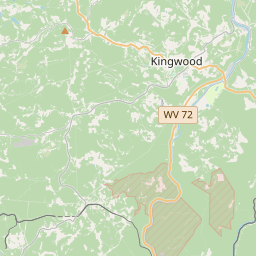Preston County Civil War Monument
Historical marker location:






April 12, 1861: The Civil War begins with the Confederate attack on Fort Sumter, located in South Carolina's Charleston Harbor.
April 15, 1861: President Abraham Lincoln issues a call for 75,000 volunteers to serve in the Union Army to suppress the rebellion.
May 24, 1861: The first major land battle, known as the First Battle of Bull Run (or First Battle of Manassas), takes place in Virginia. It ends in Confederate victory.
September 17, 1862: The Battle of Antietam in Maryland becomes the bloodiest single-day battle in American history, with heavy casualties on both sides. The Union forces, commanded by General George McClellan, manage to halt Confederate General Robert E. Lee's advance into Union territory.
January 1, 1863: President Lincoln issues the Emancipation Proclamation, declaring that all slaves in Confederate-held territories are to be set free. However, the proclamation does not immediately free all slaves in the United States.
July 1-3, 1863: The Battle of Gettysburg in Pennsylvania takes place, resulting in a significant Union victory and inflicting heavy casualties on Confederate forces. It marks a turning point in the war.
November 19, 1863: President Lincoln delivers the Gettysburg Address, emphasizing the principles of liberty, equality, and the preservation of the Union.
April 9, 1865: General Robert E. Lee surrenders to Union General Ulysses S. Grant at Appomattox Court House in Virginia, effectively ending the Civil War.
April 14, 1865: President Lincoln is assassinated by John Wilkes Booth while attending a play at Ford's Theatre in Washington, D.C.
May 10, 1865: Confederate President Jefferson Davis is captured, signaling the collapse of the Confederate government.
December 6, 1865: The Thirteenth Amendment to the United States Constitution is ratified, officially abolishing slavery throughout the country.
While this timeline provides an overview of key events, it is important to note that the Civil War spanned over four years, from 1861 to 1865, and encompassed numerous battles, campaigns, and political developments that shaped the course of American history.
The West Virginia State Capitol, located in Charleston, was completed in 1932 and features a gold dome that is taller than the dome of the United States Capitol in Washington, D.C.
In 1818, Preston County was officially established by the Virginia General Assembly. It was named in honor of James Patton Preston, the governor of Virginia at the time. The county's economy initially relied on agriculture, with farmers cultivating corn, wheat, and tobacco. The construction of the Baltimore and Ohio Railroad in the mid-1800s brought an economic boost to the area, with increased trade and transportation opportunities.
In the late 19th and early 20th centuries, Preston County experienced a mining boom. Coal mining became a major industry, attracting immigrants from Europe to work in the mines. Towns such as Kingwood, Tunnelton, and Terra Alta grew rapidly, and the county's population soared. The legacy of coal mining is still apparent today, with remnants of old mines and mining towns dotting the landscape.
Preston County has also played a significant role in American history. During the Civil War, the county remained divided, with some residents supporting the Union and others the Confederacy. The Battle of Rowlesburg in 1863 saw Confederate forces attempt to disrupt the Baltimore and Ohio Railroad, but they were ultimately defeated. The county also served as a hideout for Jesse James and his gang after their infamous bank robbery in West Virginia.
Overall, Preston County's history is one of growth and change. From its Native American roots to its agricultural beginnings, coal mining boom, and role in the Civil War, the county has a rich heritage that continues to shape its character today.
Preston County Timeline
This timeline provides a concise overview of the key events in the history of Preston County, West Virginia.
- 1774 - The area that would become Preston County is explored by European settlers.
- 1780s - Permanent European settlements begin to be established in the county.
- 1818 - Preston County is officially established by the Virginia General Assembly.
- 1840s - Preston County experiences a population boom due to the discovery of coal and the expansion of the railroad.
- 1861-1865 - Preston County is divided during the Civil War, with residents supporting both the Union and Confederate causes.
- 1872 - The first courthouse is built in the county seat of Kingwood.
- 1921 - The Cheat River Dam is completed, providing hydroelectric power to the area.
- 1979 - The Cheat River is named a National Wild and Scenic River, helping to protect the natural beauty of the area.
- 1990s - Preston County experiences economic decline due to the decline of the coal industry.
- Present - Preston County continues to be known for its outdoor recreation opportunities, including fishing, hiking, and skiing.